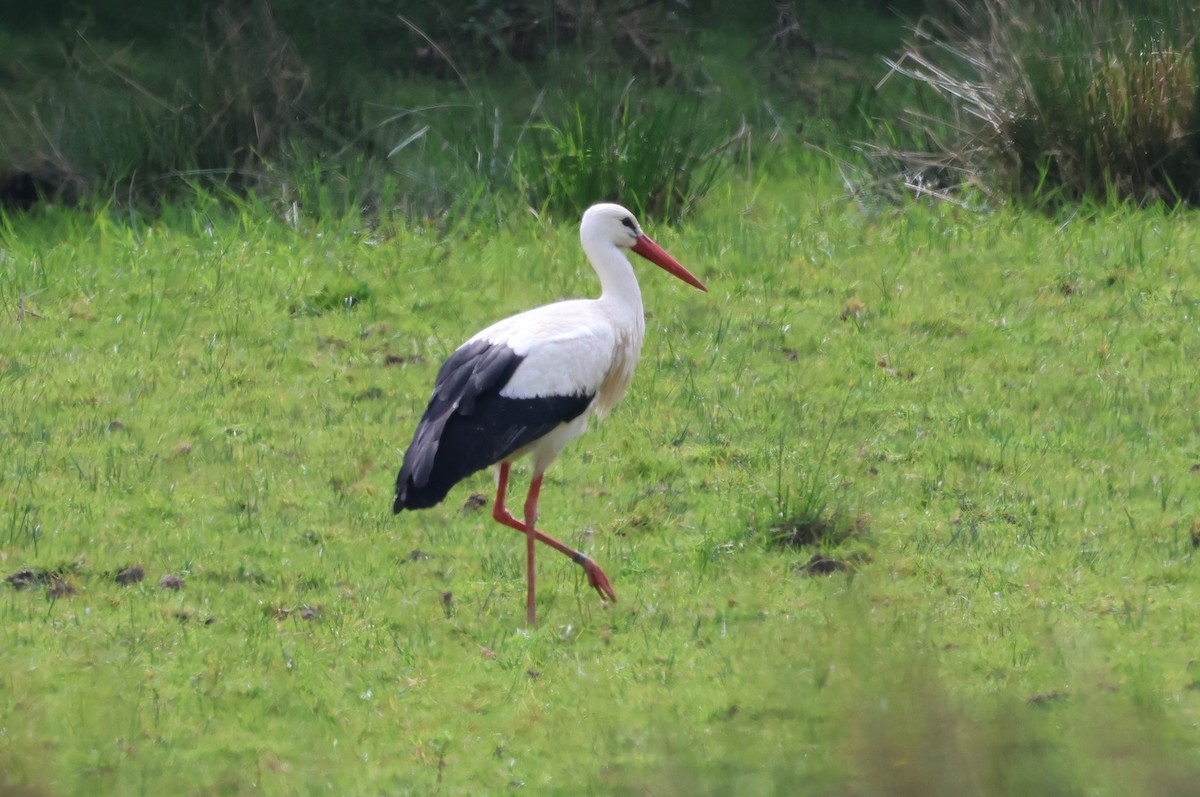Family: Ciconiidae
Genus: Ciconia
Large, mostly white stork with black flight-feathers and conical red bill. Breeds in open farmland and wetlands, with bulky stick nests conspicuous in trees and often on buildings. In nonbreeding season forages in open areas such as grasslands and agricultural areas. Flies with neck and legs outstretched, and strong, deep wingbeats interspersed with glides. Also soars on thermals; flocks migrate during daytime, often high overhead.
Photo: Look how gorgeous [myshortcode]
Description [myshortcode]

1. Geographical Distribution:
– The white stork has a broad distribution range that spans across various continents. In Europe, its breeding range covers a large portion of the continent, including countries such as Spain, Portugal, France, Germany, Poland, and Ukraine. In Asia, the species can be found in Turkey, the Caucasus region, and parts of the Middle East. In Africa, the white stork is present in regions such as the Sahel, the Horn of Africa, and as far south as South Africa.
2. Migratory Behavior:
– One of the most remarkable aspects of the white stork’s distribution is its migratory behavior. This bird is known for its extensive migrations, with populations from Europe and western Asia traveling long distances to reach their wintering grounds in Africa. The migration routes of white storks can vary, but they often involve crossing the Strait of Gibraltar or traveling through the Levant region.
3. Human Settlements:
– White storks have a strong association with human settlements, often nesting on rooftops, chimneys, and specially constructed platforms. They are also known for their connection to folklore and cultural symbolism in various countries where they are found. In many European cultures, the arrival of white storks in spring is seen as a positive sign, symbolizing the arrival of new life and fertility.
4. Conservation Status:
– While the white stork is not currently considered globally threatened, some regional populations have experienced declines due to factors such as habitat loss, changes in land use, and collisions with power lines during migration. Conservation efforts in Europe have been successful in increasing breeding populations, and initiatives to mitigate threats during migration and in wintering areas are ongoing.
Overall, the distribution of the white stork encompasses a wide range of habitats and human-influenced landscapes, making it a species of great interest to conservationists, researchers, and the public alike. Its migratory behavior and cultural significance have solidified its place as a symbol of hope and connection across continents.




